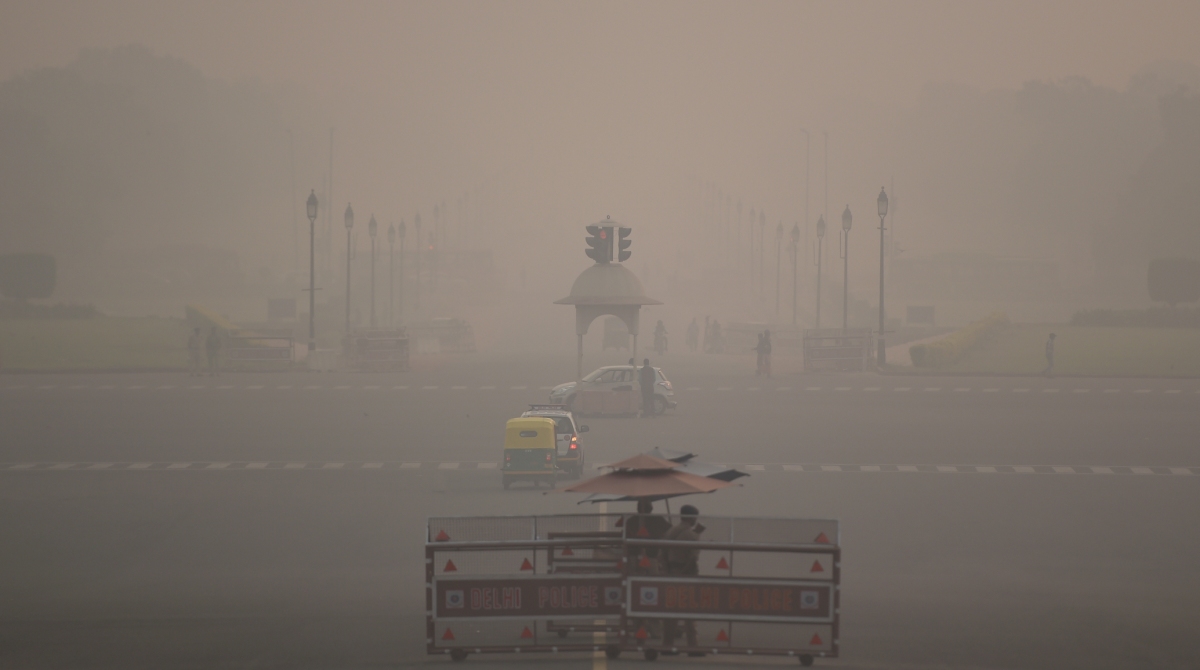Today, 8 November 2018, Delhi is the world’s most polluted city. This is neither an exaggeration nor an attempt to belittle the great city; this is a fact that various Air Quality Index (AQI) measurements are screaming together, right in our faces.
On 8 November, the morning after Diwali, people in Delhi woke up to a blanket of haze created by thick smoke from the firecrackers that, rather ironically, brightened the city’s skyline in the night yesterday. The haze was so thick that visibility dropped to mere metres at many places.
Advertisement
AQI levels spiked, as was expected. But what was alarming was the level the index read. AQICN readings of the air quality on Thursday morning reflected 999 (the maximum level the monitors can record) at some places in Delhi, especially the eastern parts.
Such is the density of the particulate matters – PM2.5 and PM10 – that AQICN says there will hardly be any change in air quality in the city on Friday.
What is PM2.5 and how it affects us
PM stands for particulate matter. The 2.5 refers to width of the tiny particles or droplets in the air measured as microns (micrometre). One micron is equal to one millionth of a meter. Thus 2.5 is two and one half microns or less. Thus a dot (.) may contain several thousand small particles.
Depending on the exposure, PM2.5 can cause anything from lung irritation to lung cancer. PM2.5 can embed themselves deep inside our lungs thus worsening medical conditions such as asthma and heart disease.
How does AQI 999 affect us?
There are six levels of AQI starting from 0 and going up to 300+. AQI 0-50 is globally accepted as ‘good’. Every increase of 50 contributes to the worsening of the AQI. Thus at 350+, the AQI is considered ‘hazardous’. A hazardous AQI means that everyone may experience more serious health effects. Under hazardous AQI, people are advised to avoid all outdoor exertions.
Even healthy people start experiencing breathing problems when the AQI is just above 400. Thus at 999, it is almost equivalent to walking in a gas chamber under the sky.
At AQI 999, the presence of Carbon Monoxide (CO) in the air might hover around the fatal level of 90. CO is basically a poisonous gas emitted from anything from stubble burning to vehicles that has the capacity to slowly kill anyone. When encountered in concentrations above about 35 parts-per-million (ppm), CO is toxic to hemoglobic animals, which also includes humans. CO poisoning can cause headache, chest pain, dizziness and even memory loss. Death due to CO poisoning is reported from across the world. Worst affected are infants, the elderly, people with chronic heart disease, anaemia, or breathing problems.
And CO is just one of the pollutants. Others include sulphur dioxide, nitrogen dioxide, lead and ozone. Inhaling any of them increases the chances of a healthy body experiencing serious respiratory problems which might also cause irritation to the eyes and frequent headaches.
What was Delhi’s situation post Diwali night?
The Supreme Court order had restricted burning of firecrackers from 8 pm to 10 pm but people flouted it and continued well into the midnight.
The Delhi AQI thus touched the maximum levels on Thursday morning with Anand Vihar recording 999. In central Delhi too, around the Major Dhyan Chand National Stadium, the AQI touched 999 while the US Embassy in Chanakyapuri scored 459.
Read More: Morning after Diwali, Delhi AQI ‘hazardous’, touches maximum levels
At 11 pm on Wednesday, the overall Air Quality Index (AQI) was recorded at 302, according to the Central Pollution Control Board (CPCB).
The air quality had started deteriorating from 7 pm, when the AQI was 281, rising to 291 at 8 pm. It further deteriorated to 294 at 9 pm and 296 at 10 pm, as per the CPCB.
Are firecrackers solely responsible?
No, AQI in Delhi and many other metros of the country has often turned to ‘very poor’ or ‘severe’ at any time of the year, including monsoons.
One of the major reasons for poor air quality and existence of CO and other PMs is vehicular pollution and emissions from other sources such as factories and stubble burning. But firecrackers, especially the non-green ones, contribute to a sudden and extremely sharp upward spike in AQI.
ALSO READ: Delhi air quality to remain severe on 9 November, PM2.5 to be between 240-390











